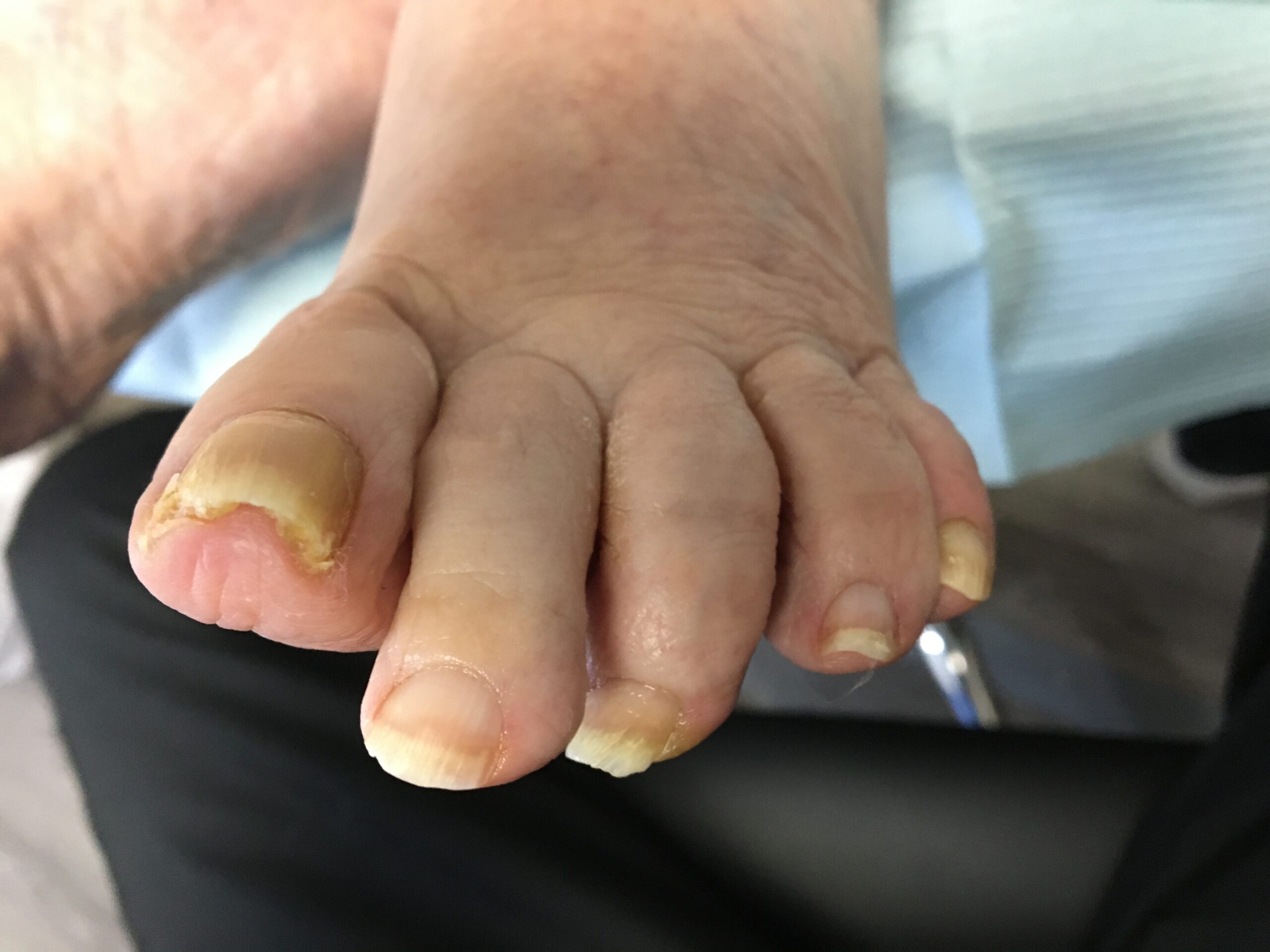Understanding and Managing Ingrown Toenail: Causes, Symptoms, and 5 Treatment options
Introduction
Discover the causes, symptoms, and effective treatments for ingrown toenails. Learn about 5 treatment options to alleviate discomfort.
Ingrown toenails, a common podiatric issue, can cause discomfort and pain for individuals of all ages. This condition occurs when the edge of a toenail grows into the surrounding skin, leading to inflammation, tenderness, and, in some cases, infection. While ingrown toenail often affect the big toe, they can occur on any toe. In this article, we will explore the causes, symptoms, and effective treatments for ingrown toenails.
Causes of Ingrown Toenail
Ingrown toenails can develop for various reasons, with some individuals being more prone to this condition than others. Some common causes include:
- Improper Nail Cutting: Trimming toenails too short or rounding them at the edges increases the likelihood of the nail growing into the surrounding skin.
- Poorly Fitted Footwear: Shoes that are too tight or narrow can exert pressure on the toes, pushing the toenails into the skin and promoting ingrown toenails.
- Injury or Trauma: Stubbing the toe or other forms of trauma can lead to changes in the nail’s growth pattern, increasing the risk of ingrown toenails.
- Genetics: Some people may be genetically predisposed to ingrown toenails, as the shape and structure of their nails can make them more susceptible to this condition.
- Ingrown Toenail Surgery: In some cases, individuals who have undergone ingrown toenail surgery may experience recurrence if the procedure did not address the underlying causes.
Symptoms of Ingrown Toenails
Recognizing the symptoms of ingrown toenails is crucial for early intervention. Common signs include:
- Pain and Tenderness: Discomfort around the affected toenail is a primary symptom. This may range from mild pain to severe throbbing.
- Redness and Swelling: The surrounding skin may become red, swollen, and inflamed as a result of the toenail piercing into the flesh.
- Infection: If left untreated, ingrown toenails can become infected. Signs of infection include increased pain, pus or drainage, and warmth around the affected area.
- Difficulty Wearing Shoes: The pressure from footwear can exacerbate the pain and make it challenging to wear closed shoes comfortably.
Treatment Options
Managing ingrown toenails involves a combination of at-home care, lifestyle adjustments, and, in some cases, professional medical intervention. Here are some effective treatment options:
- Proper Nail Cutting: Trim toenails straight across and avoid rounding the edges. Cutting them too short increases the risk of ingrown toenails.
- Wear Proper Footwear: Choose shoes with enough room for your toes and avoid tight, narrow footwear. Opt for open-toed shoes or sandals, when possible, to alleviate pressure on the toes.
- Protect the Toe: Placing a small piece of cotton under the ingrown edge of the nail can help lift it away from the skin, promoting proper growth.
- Over-the-Counter Medications: Non-prescription pain relievers and anti-inflammatory medications can help manage pain and reduce swelling. Always follow the recommended dosage guidelines.
- Avoid Self-Surgery: Attempting to remove an ingrown toenail at home can lead to further complications and increase the risk of infection. Seek professional care if the condition persists.
When to Seek Professional Help
Some ingrown toenails cases require professional medical attention. Consult a foot care nurse or a podiatrist if:
- The ingrown toenail is severely painful, swollen, or showing signs of infection.
- Home remedies and over-the-counter treatments do not provide relief.
- You have diabetes or a compromised immune system, increasing the risk of complications.
- Any client can not do it
In some instances, a healthcare professional may need to perform a minor procedure to remove the ingrown portion of the nail. This can often be done in the office setting under local anesthesia.
In North London foot care, we use a revolutionary, non-invasive, pain free, safe and incredibly effective ingrown toenail treatment to correct the ingrown nail growth.
The Onyfix System corrects the nail through physiological nail re-growth. it is an effective solution for ingrown toenail removal. No restrictions on activities, safe for diabetics and rapidly reduces pain.
Conclusion
Ingrown toenails, though common, can cause significant discomfort and affect daily activities. Understanding the causes, recognizing the symptoms, and adopting proper care practices are crucial steps in managing and preventing ingrown toenails. With the right approach, individuals can find relief and reduce the risk of recurrence, allowing them to maintain healthy and pain-free feet. Call for a consultation or book an appointment online to see if Onyfix is right for you.


I paay a quick visit daily a few web sites and sites to read articles or reviews, however this web site presents feature
based posts. https://Bandurart.mystrikingly.com/
I pay a quick visit daily a few web sites and sites
to read articles or reviews, however this web site presents feature
based posts. https://Bandurart.mystrikingly.com/
Impressive posts! My blog UY9 about Website Promotion also has a lot of exclusive content I created myself, I am sure you won’t leave empty-handed if you drop by my page.